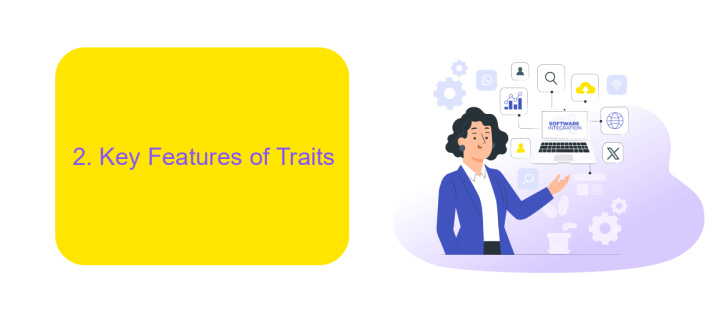What is Traits in MuleSoft
In the realm of MuleSoft, traits play a crucial role in enhancing the functionality and flexibility of API design. Traits allow developers to define reusable sets of properties and behaviors that can be applied across multiple APIs, streamlining the development process. This article delves into the concept of traits in MuleSoft, exploring their significance and practical applications in API management.
Overview
MuleSoft is a widely-used integration platform that helps businesses connect various applications, data, and devices. One of the key features in MuleSoft is the concept of traits, which allow developers to define reusable properties and behaviors for APIs. Traits can be used to standardize and streamline API development, ensuring consistency and reducing redundancy.
- Reusable properties: Traits enable developers to define common properties that can be reused across multiple APIs.
- Standardization: By using traits, organizations can enforce consistent standards and best practices in API development.
- Efficiency: Traits reduce the need for repetitive code, making the development process more efficient.
For example, ApiX-Drive, a service that facilitates integration between various applications and platforms, can leverage MuleSoft traits to ensure that all APIs adhere to specific standards. This not only simplifies the integration process but also enhances the maintainability and scalability of the APIs. By utilizing traits, ApiX-Drive can offer a more robust and reliable integration solution for businesses.
Key Features of Traits

Traits in MuleSoft offer a powerful way to define reusable components that can be applied across multiple APIs, ensuring consistency and reducing redundancy. One of the key features of traits is their ability to encapsulate common functionality, such as security schemes, logging, and error handling, which can be easily integrated into different API specifications. This modular approach not only streamlines the development process but also enhances maintainability and scalability of the APIs.
Another significant feature is the flexibility traits provide in customizing API behavior. For instance, using services like ApiX-Drive, developers can seamlessly configure integrations between various applications and systems. Traits allow for the inclusion of predefined configurations and settings, making it easier to manage complex integrations without extensive coding. By leveraging traits, teams can ensure that their APIs adhere to best practices and organizational standards, ultimately leading to more robust and reliable integrations.
Benefits of Using Traits

Using traits in MuleSoft can significantly enhance the efficiency and maintainability of your integration projects. Traits allow developers to define reusable sets of properties and behaviors that can be applied across multiple APIs, ensuring consistency and reducing redundancy.
- Consistency: Traits ensure that common functionalities and standards are consistently applied across various APIs, leading to more predictable and reliable integrations.
- Reusability: By defining traits once and applying them across multiple APIs, developers can save time and effort, avoiding the need to duplicate code.
- Maintenance: With traits, updates to shared functionalities can be made in one place, simplifying the process of maintaining and updating multiple APIs.
- Scalability: Traits facilitate the scaling of integration projects by allowing new APIs to quickly adopt existing standards and practices.
- Enhanced Integration: When using services like ApiX-Drive, traits can streamline the setup and management of integrations, making it easier to connect various applications and automate workflows.
Overall, traits in MuleSoft provide a powerful mechanism for optimizing API development and management. By leveraging traits, organizations can achieve higher efficiency, better scalability, and more streamlined integration processes, particularly when combined with integration platforms like ApiX-Drive.
How to Use Traits

Using traits in MuleSoft allows developers to define reusable attributes and behaviors that can be applied across multiple API components. This approach promotes consistency and reduces redundancy, making it easier to manage and maintain APIs.
To effectively utilize traits in MuleSoft, you need to understand how they can be integrated into your API definitions. Traits are typically defined in RAML (RESTful API Modeling Language) and can be reused across various endpoints and methods.
- Define the trait in a separate RAML file for better organization.
- Include the trait in your main API definition using the `uses` keyword.
- Apply the trait to specific endpoints or methods using the `is` keyword.
For instance, if you're using ApiX-Drive to streamline your integration processes, you can define a logging trait that captures and logs request and response details. This trait can then be applied to all relevant endpoints, ensuring consistent logging across your API without repetitive code.
Best Practices for Using Traits
When using traits in MuleSoft, it is essential to follow best practices to ensure efficient and maintainable integration solutions. Firstly, always define traits in a separate RAML file and reference them in your main API specification. This modular approach promotes reusability and simplifies updates. Additionally, use descriptive names and documentation for each trait to provide clear context and purpose, aiding both current and future developers in understanding and utilizing them effectively.
Furthermore, when integrating services like ApiX-Drive, ensure that traits encapsulate common functionalities such as authentication, error handling, and logging. This not only standardizes these processes across multiple APIs but also reduces redundancy and potential errors. Regularly review and update traits to align with evolving integration requirements and best practices. By adhering to these guidelines, you can create robust, scalable, and maintainable API solutions in MuleSoft, enhancing overall integration efficiency.
FAQ
What are Traits in MuleSoft?
How do Traits improve API design in MuleSoft?
Can Traits be customized for different APIs?
Are Traits specific to MuleSoft, or can they be used in other integration platforms?
How can I automate the application of Traits to my APIs?
Strive to take your business to the next level, achieve your goals faster and more efficiently? Apix-Drive is your reliable assistant for these tasks. An online service and application connector will help you automate key business processes and get rid of the routine. You and your employees will free up time for important core tasks. Try Apix-Drive features for free to see the effectiveness of the online connector for yourself.

